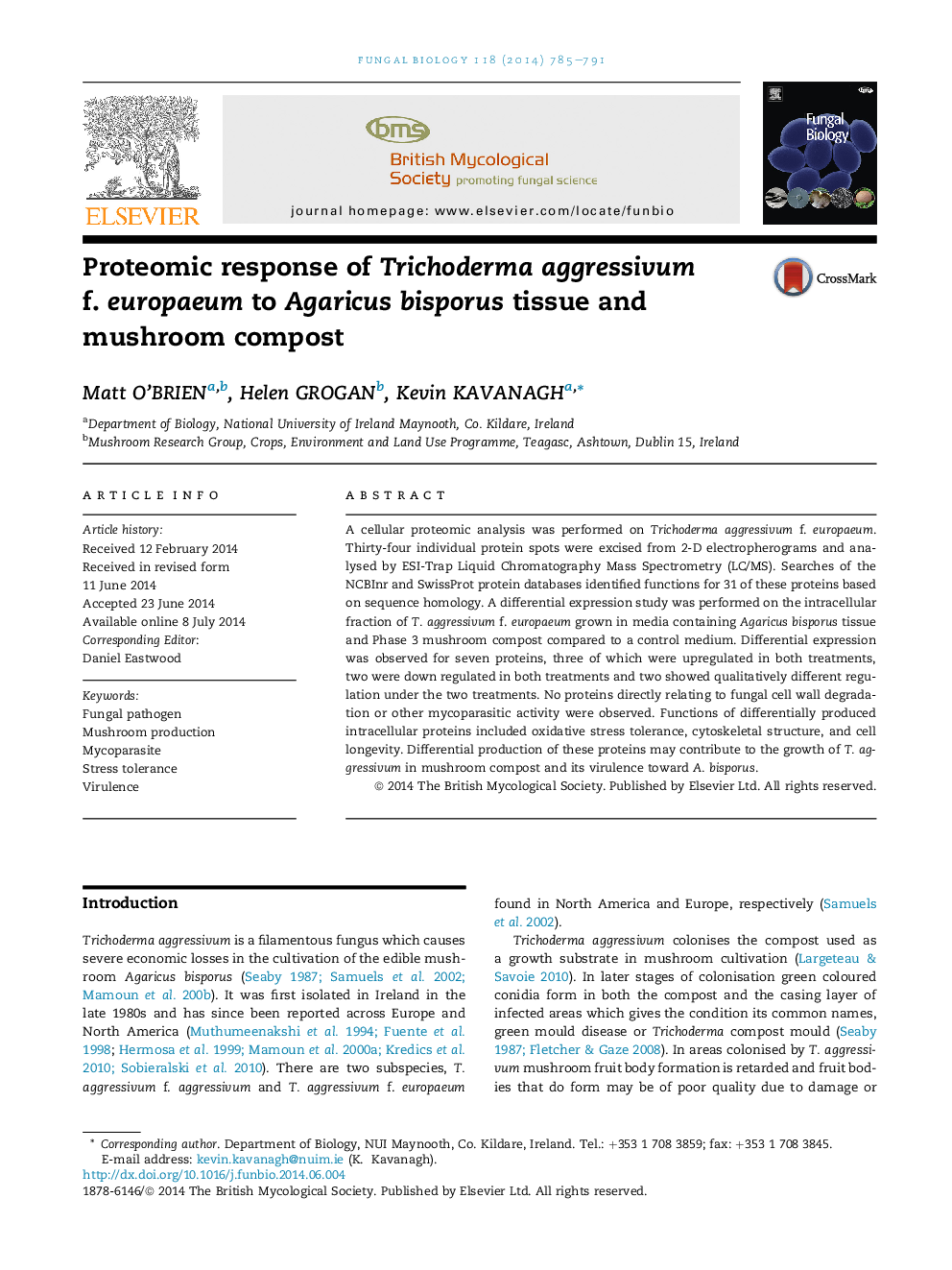| Article ID | Journal | Published Year | Pages | File Type |
|---|---|---|---|---|
| 4356992 | Fungal Biology | 2014 | 7 Pages |
•Exposure of Trichoderma aggressivum to mushroom compost leads to differential protein expression.•Exposure to mushroom tissue induces oxidative stress response in T. aggressivum.•Trichoderma aggressivum displays strategies to adapt to Agaricus cell wall components.
A cellular proteomic analysis was performed on Trichoderma aggressivum f. europaeum. Thirty-four individual protein spots were excised from 2-D electropherograms and analysed by ESI-Trap Liquid Chromatography Mass Spectrometry (LC/MS). Searches of the NCBInr and SwissProt protein databases identified functions for 31 of these proteins based on sequence homology. A differential expression study was performed on the intracellular fraction of T. aggressivum f. europaeum grown in media containing Agaricus bisporus tissue and Phase 3 mushroom compost compared to a control medium. Differential expression was observed for seven proteins, three of which were upregulated in both treatments, two were down regulated in both treatments and two showed qualitatively different regulation under the two treatments. No proteins directly relating to fungal cell wall degradation or other mycoparasitic activity were observed. Functions of differentially produced intracellular proteins included oxidative stress tolerance, cytoskeletal structure, and cell longevity. Differential production of these proteins may contribute to the growth of T. aggressivum in mushroom compost and its virulence toward A. bisporus.
